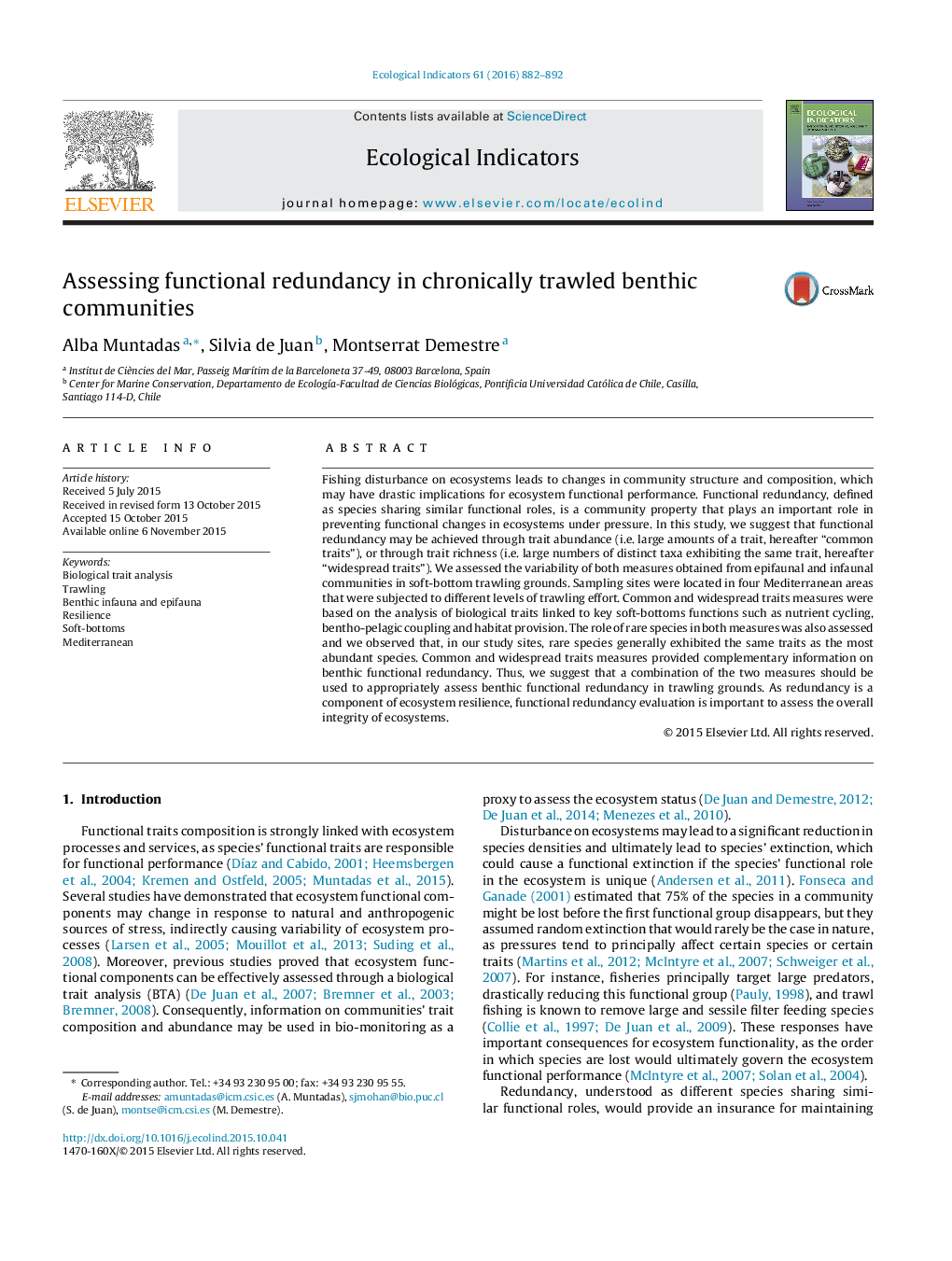| Article ID | Journal | Published Year | Pages | File Type |
|---|---|---|---|---|
| 6293748 | Ecological Indicators | 2016 | 11 Pages |
Abstract
Fishing disturbance on ecosystems leads to changes in community structure and composition, which may have drastic implications for ecosystem functional performance. Functional redundancy, defined as species sharing similar functional roles, is a community property that plays an important role in preventing functional changes in ecosystems under pressure. In this study, we suggest that functional redundancy may be achieved through trait abundance (i.e. large amounts of a trait, hereafter “common traits”), or through trait richness (i.e. large numbers of distinct taxa exhibiting the same trait, hereafter “widespread traits”). We assessed the variability of both measures obtained from epifaunal and infaunal communities in soft-bottom trawling grounds. Sampling sites were located in four Mediterranean areas that were subjected to different levels of trawling effort. Common and widespread traits measures were based on the analysis of biological traits linked to key soft-bottoms functions such as nutrient cycling, bentho-pelagic coupling and habitat provision. The role of rare species in both measures was also assessed and we observed that, in our study sites, rare species generally exhibited the same traits as the most abundant species. Common and widespread traits measures provided complementary information on benthic functional redundancy. Thus, we suggest that a combination of the two measures should be used to appropriately assess benthic functional redundancy in trawling grounds. As redundancy is a component of ecosystem resilience, functional redundancy evaluation is important to assess the overall integrity of ecosystems.
Related Topics
Life Sciences
Agricultural and Biological Sciences
Ecology, Evolution, Behavior and Systematics
Authors
Alba Muntadas, Silvia de Juan, Montserrat Demestre,
